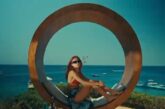
The Seychelles Islands are Africa’s prettiest
fish for sale Beti Moustache, a fisherman at a little market on Praslin island.
It’s the stuff of many cliché-strewn travelogues. Palm-fringed, powdery beaches? Check. Turquoise seas and balmy, tropical waters? Check again.
The revolting thing about clichés is that they’re true, and no truer than on Seychelles’ Praslin Island.
Praslin’s beaches – including Anse Lazio, voted the world’s fourth-best beach on TripAdvisor – has sand so powdery that it’s the consistency of castor sugar (and, yes, there are palm trees).
aTP- Arab tourism portal News – Says Nicki Gules writes on City Press of South Africa – At a few degrees south of the equator, the surrounding Indian Ocean is so balmy and calm that swimming in it is rather like wallowing in a vast Jacuzzi, just without the bubbles. Sitting in the gently swaying sea, watching the sunset with a whisky on the rocks is something I’ll not forget in a hurry. There are no large waves rushing to dunk you face-first into the sand and pressure-hose your sinuses, à la Durban beach.
Praslin Island, about 20 minutes’ flight in a 19-seater propeller plane from the Seychelles’ main island of Mahe, is everything it says on the postcard.
Also postcard perfect is Praslin’s Paradise Sun hotel, where my dark-wood decorated plantation-style bedroom chalet was a mere 20 meters from the sea, and where the restaurant with its beach-sand floor curves seawards into the rippling waves. Take it from me: the entire place is absurdly perfect. It even has the obligatory hot island guy, in the form of hotel general manager and boat-skippering Frenchman Lionel Ferrari, accent and all.
Tropical fish tank
Seychelles is an archipelago of 115 islands, and Praslin is the second largest. Many of the smaller islands are uninhabited and designated as national parks. On the northern coast of Praslin, on which the Paradise Sun is situated, lies the Curieuse Marine National Park. And if it’s marine wildlife you want to see, you’ll go to few better places.
It’s a little like swimming inside a tropical fish tank, with abundant Seychelles clownfish, parrotfish, emperor angelfish, butterflyfish and blue tang (like Dory in Finding Nemo) within touching distance. There are even hawksbill turtles to swim alongside. I had never snorkelled before, and I found it surprisingly easy to stay afloat.
After an afternoon at St Pierre Island, we spent the next day on a boat, hopping from little Coco Island to its big sister Felicite, where the coral reefs are bright white and deep blue.
Ferrari showed off his skippering skills and his staff showed off their fish braaiing prowess on Felicite with a meal of barbequed tuna, chicken and seared pork ribs.
On board the ski boat, it was every bit the lifestyle one only gets to see in movies or in European society magazines: it’s all diving off the side of the boat into yet more warm azure water, frolicking with yet more brightly coloured sea creatures and floating in the gentle swells. My only struggle was trying to tread water in the sea while sipping French Champagne from an elegant flute – a little like drinking champers on a treadmill. It’s more relaxing (and more elegantly executed) on a boat beneath a wide-brimmed hat and behind large sunglasses.
The Coco de Mer
If you’d rather experience nature on land, there is the island of Curieuse, where you can see tortoises that are almost 100 years old.
On Praslin, there is the world-famous Unesco World Heritage Site, Vallee de Mai, or the Fond Ferdinand nature reserve – a sexually charged tropical palm forest. There, you can find the world-famous Coco de Mer, known to botanists as the Lodoicea palm, and to many others as the love nut.
Endemic to the Seychelles islands of Praslin and Curieuse, the Lodoicea was named in honour of French King Louis XV after his country colonised the islands in 1744, and named them all after his finance minister Jean Moreau de Sechelles. Charming.
The Coco de Mer palms are dioecious, which means they come in both male and female plants. The male plants have long, curved phallic flowers that pollinate the female plants, which then grow the nuts, the largest seed in the plant kingdom, for five years. One glance at the fruit will explain how it got its name.
Before the Europeans discovered the source of the coconuts, they were found washed up on the beaches of faraway Indian Ocean islands, where they were traded and highly prized. It was believed that they grew on a mythical tree that sprouted on the seabed, and European aristocrats would have them polished and encrusted with jewels for their homes.
Sumptuous seafood
All the snorkelling and hiking in the sex-crazed forest can work up an appetite, and Paradise Sun executive chef Davinder Rawat, who has worked in hotels in Dubai for 30 years, has revamped the hotel’s menu to suit the taste of picky international travellers. There’s everything from sushi and dim sum to a wide variety of seafood and even pizza.
Rawat’s daughter is a bonafide rocket scientist, having just graduated from a university in Delhi with a degree in astronautical engineering. Her dad’s not short of brains either; the elegant eight-course farewell fish braai he treated us to was symphonic in scope and variety. And caused me to gain at least five kilos.
A day on Praslin Island to me felt as relaxing as a week’s holiday. But if you’re still a little strung out, go to the Balinese masseuses at the Paradise Sun, who deliver a long-stroke massage that combines Shiatsu, Swedish and Balinese techniques that render it second to none. Trust me, it’s unmissable.
Everything in Praslin was so ridiculously perfect that it’s hard to think of tourists having any complaints. But when it doesn’t match the postcard, things get pretty whingey. Ferrari has faced the most amusing gripes.
“But it’s RAINING! We didn’t come here for the rain! Make it STOP!” railed one lot of Italians.
Perfection, however, comes at a price. And although Paradise Sun costs R24 902 for seven nights, the price has been discounted for South Africans, who receive a special rand-based rate. Management has also cut the price of the extras to lessen the pain on South African guests who come because they know the Tsogo Sun brand. But still, the wine and alcoholic drinks are pricey, thanks to hefty import duties, and all the food has to be flown in because the islands themselves produce very little of their own.
Although the South Africans do complain about the cost, it’s worth it. Ditch Mauritius, where everybody goes, and rather head for the Seychelles.
Prance past the palms, waggle your toes in the powdery beaches and sit in the tropical turquoise waters sipping on a cold glass of scotch. You’ll be glad you did.
Gules was a guest of Tsogo Sun’s Paradise Sun hotel. Their discounted package is R24 902 per person sharing for seven nights, and includes breakfast and dinner. The offer is valid until July 31. Gules travelled on Air Seychelles, which flies from Johannesburg to Mahe five times a week. Tickets to Praslin cost in the region of R8 000 per person








